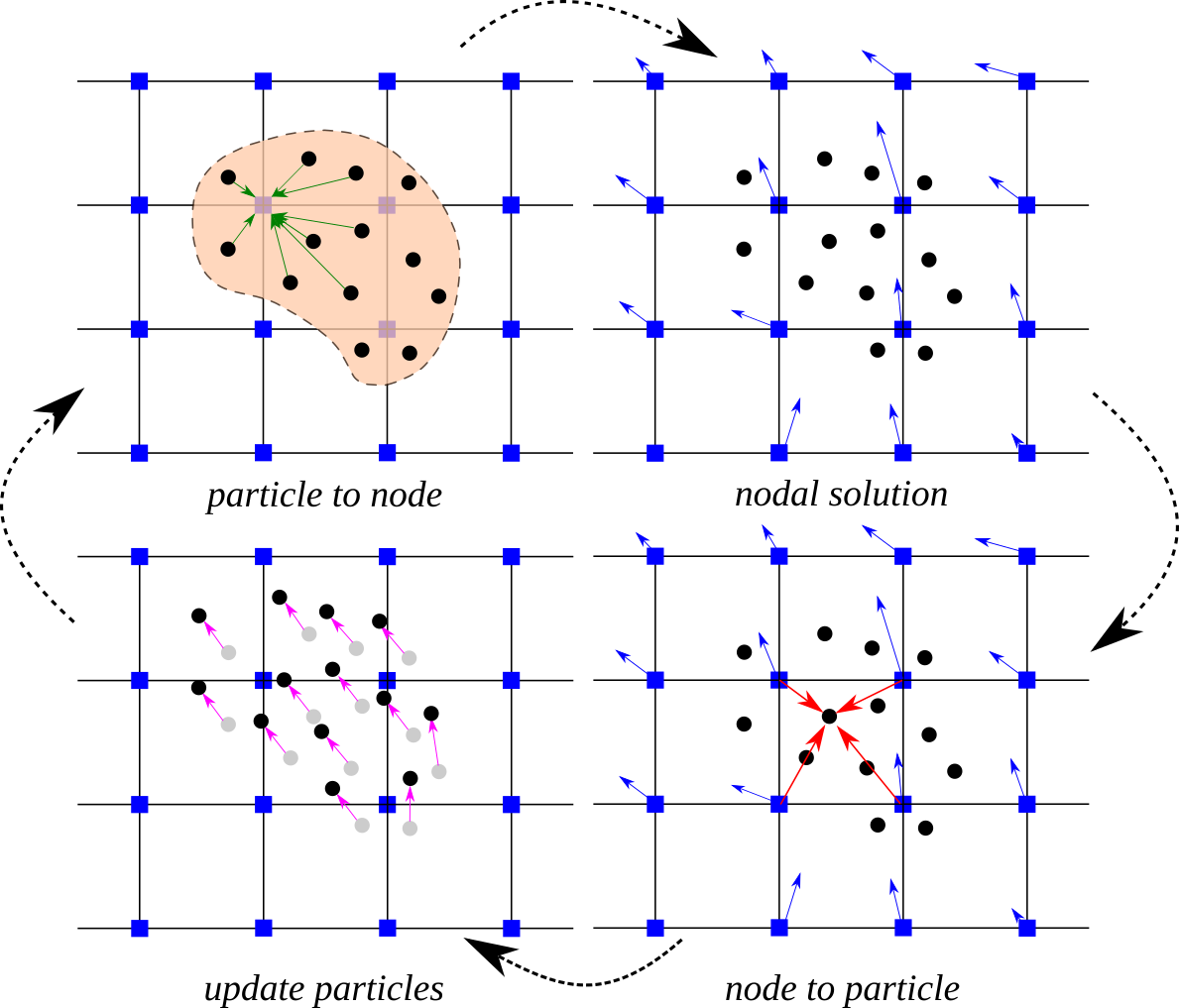Material Point Method (MPM) is a particle based method that represents the material as a collection of material points, and their deformations are determined by Newton’s laws of motion. The MPM is a hybrid Eulerian-Lagrangian approach, which uses moving material points and computational nodes on a background mesh. This approach is very effective particularly in the context of large deformations.

Illustration of the MPM algorithm (1) A representation of material points overlaid on a computational grid. Arrows represent material point state vectors (mass, volume, velocity, etc.) being projected to the nodes of the computational grid. (2) The equations of motion are solved onto the nodes, resulting in updated nodal velocities and positions. (3) The updated nodal kinematics are interpolated back to the material points. (4) The state of the material points is updated, and the computational grid is reset
MPM Online course book
Learn to code MPM with Python online book
CB-Geo MPM code
- The CB-Geo MPM code is available at GitHub
Documentation
Team
Publications
Runout of liquefaction-induced tailings dam failure: Influence of earthquake motions and residual strength
Sordo, B., Rathje, E., Kumar, K.;
A hybrid Finite Element and Material Point Method for modeling liquefaction-induced tailings dam failures
Sordo, B., Rathje, E., Kumar, K.;
Sequential Hybrid Finite Element and Material Point Method to Simulate Slope Failures
Sordo, B., Rathje, E., Kumar, K.;
Modeling liquefaction-induced runout of a tailings dam using a hybrid finite element and material point method approach
Sordo, B., Rathje, E., Kumar, K.;
Hybrid Finite Element and Material Point Method to simulate granular column collapse from failure initiation to runout
Sordo, B., Rathje, E., Kumar, K.;
GNS: A generalizable Graph Neural Network-based simulator for particulate and fluid modeling
Kumar, K., Vantassel, J.;
In-situ visualization of natural hazards with Galaxy and Material Point Method
Abram, G., Solis, A., Liang, Y., and Kumar, K.;
IEEE Computing in Science & Engineering
Investigating the thixotropic behaviour of tremie concrete using the slump‑flow test and the Material Point Method
Wilkes, C.;
Kumar, K.;
Biscontin, G.;
Concrete Rheology
Large Deformation Modelling in Geomechanics
Kumar, K.;
Soga, K.;
In Geotechnical Design and Practice
Trends in large‑deformation analysis of landslide mass movements with particular emphasis on the material point method
Soga, K;
Alonso, E;
Yerro, A;
Kumar, K;
Bandara, S.;
Géotechnique, 66(3), 248‑273
Post‑failure behavior of tunnel heading collapse by MPM simulation
Cheng, X.;
Zheng, G.;
Soga, K.;
Bandara, S.;
Kumar, K.;
Diao, Y.;
Xu, J.;
Science China Technological Sciences, 58(12), 2139‑2152.